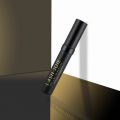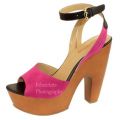Amazing Photography Techniques to Increase Sales and Grow Your Business

Product photography is an integral part of the e-commerce vertical. The photographs, representative of the product being sold, provide the customer with a fair idea of the appearance and quality of the product. However, things get a bit tricky for e-tailers when it comes to apparel and reflective products.
In the case of the former, it is a big challenge to demonstrate the fit and shape of the apparel, for which one would either require a model (which is indeed a costly endeavour) or a mannequin (which happens to be distracting for the customers) or maybe a screen that could provide the customer’s eye with an extraordinary level of detail (impossible as of now). This is where ghost mannequin photography comes into play. Similarly, in the case of the latter, it's quite a hassle to capture reflective products on camera, mainly because of the glare and background. Therefore, for capturing high-quality, crisp, and clear images of reflective products, one has to make use of the reflective product photography technique. Here’s a brief of what these two photography techniques entail and how you can come up with some amazing shots.
Ghost mannequin photos; Here’s how they are created
The name ‘ghost mannequin’ says it all. When a photographer clicks several photos of an apparel with a model or mannequin wearing it and processes them in such a way that the resultant photo obtained post processing showcases only the product image, it is termed as ghost mannequin photography since the model or mannequin is made to disappear like a ghost. It is a fairly popular photography technique, especially in the online apparel business. Talking of the procedure, the photographer first takes a photo of the attire worn by a model or mannequin and thereafter takes multiple flat-view photos of any inner part of the attire that may have been blocked by the model or mannequin. For producing high-quality ghost mannequin photos, the camera settings that need to be fine-tuned include ISO, shutter speed, aperture settings, and flash power.
Reflective photography; What you need to know
Reflective product photography entails capturing crisp and clear images of highly reflective products like metals, gems, glass, etc., by shaping and controlling light. The most fundamental principle for reflective product photography is to avoid glare. Next, the camera settings and gear play a very crucial role. While the choice of the gear will be governed by what you want to capture; however, the camera settings that need to be fine-tuned include the focal length, aperture, shutter speed, and filters. Finally, to add a professional finishing touch to reflective photos, one needs to make use of a good software tool such as Adobe Photoshop Lightroom.
The takeaway
Although the principles of ghost mannequin photography and reflective product photography may sound quite simple, their execution requires practice to perform efficiently and is often time-consuming. Both these techniques demand advanced shooting and retouching skills. The ghost mannequin photography technique successfully produces a lifelike image that keeps the focus firmly on the product. For the sellers of reflective products, rightly executed reflective product photography can make the captured photos stand out.
Other articles and publications:
- +1 (770) 690-9389
- 760 Vinca Ct, Alpharetta, GA 30005, USA
- www.etherartsus.com/






